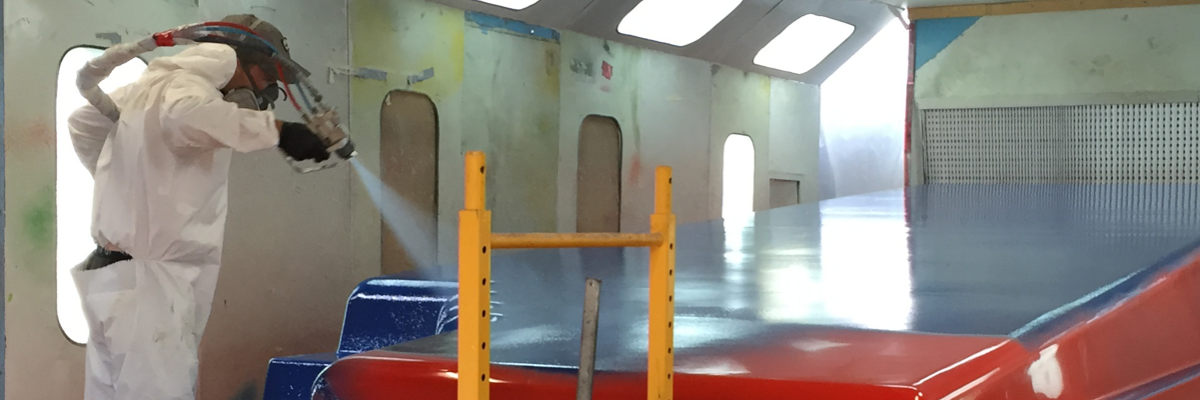Contact or Open Molding
This is the most common form of fiberglass production and the method that most people are familiar with. The two common varieties of open, or contact, molding are hand lay-up and spay-up.
Hand lay-up is typically used in low-volume production of large products, like truck body components, concrete forms, and containment tanks. A pigmented gel coat is first sprayed onto the mold for a high-quality surface. When the gel coat has cured, glass fiber reinforcing mat is placed on the mold, and catalyzed resin is applied. Manual rolling then removes entrapped air and consolidates the glass fiber and resin layer. Additional layers of glass fiber reinforcement and resin are added for thickness. Hand laid fiberglass parts are generally cured at room temperature.
The next step in fiberglass molding,, spray-up offers greater shape complexity and faster production. Like hand lay-up, spray-up utilises a relatively low-cost open mold, room temperature curing resin, and is ideal for producing large parts such as tractor hoods and bath tubs in low to moderate quantities. A two component spray gun fitted with a roving cutter delivers chopped fiber reinforcement mixed with catalysed resin to the open mold.
As with lay-up, manual rolling removes entrapped air and wets the fiber reinforcement. Woven roving is often added in specific areas for thickness or greater strength. Pigmented gel coats can be used to produce a smooth, colourful surface.

